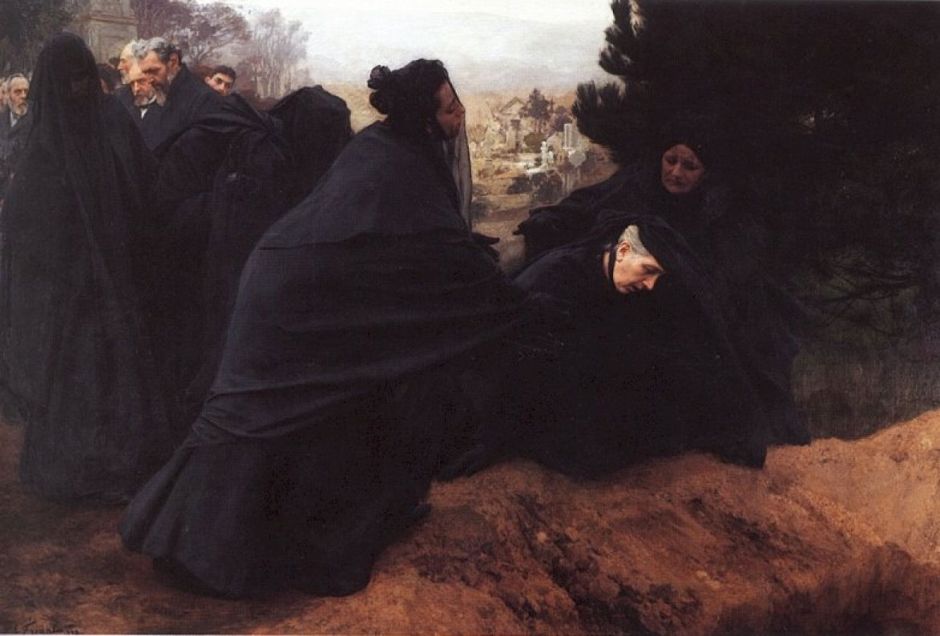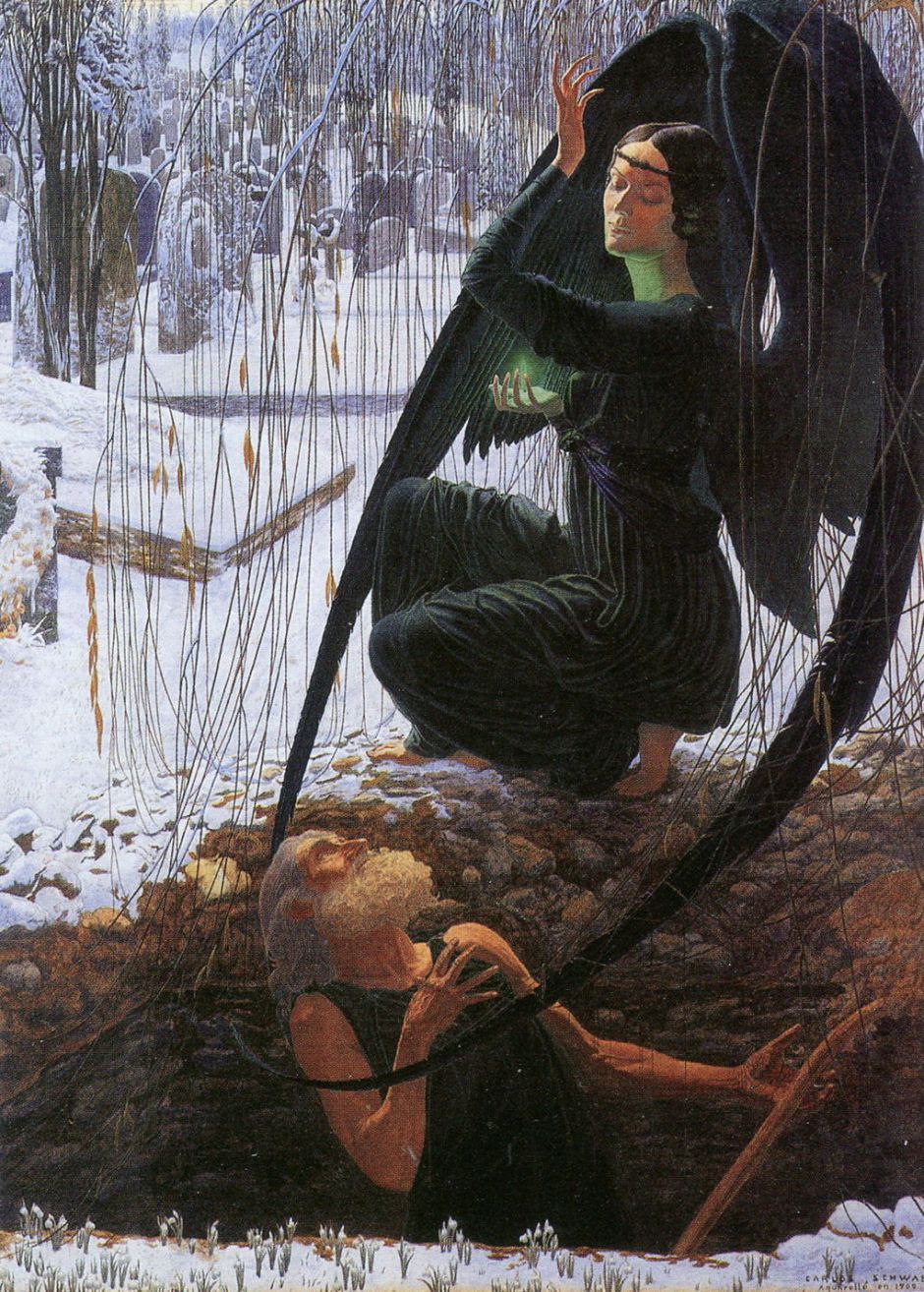In the first of these two articles featuring paintings of country churchyards, I showed examples of their roles in everyday life, as used by William Hogarth, through their use in Romantic horror, to their association with death.
Responses to Gustave Courbet’s famous Burial at Ornans (1849-50) were slow in arriving.

In 1885, Erik Werenskiold painted a rural Norwegian response in his Peasant Burial. There’s no crowd here, just a handful of men and one woman led by a young priest. Beyond them are a winding green valley and distant peaks still bearing the snows of the previous winter.
During the French Revolution, in 1793-96 there was a Royalist counter-revolution in the Vendée region of western France. Long suppressed from the received history of France, it’s now thought that more than 170,000 military and civilians were killed, most of them massacred by Republican troops. As the centenary approached in the late nineteenth century, artists started to tell the darker side of what was still relatively recent history.

François Flameng painted Massacre of Machecoul in 1884. At the right is a group of fashionably-dressed gun-toting (and sword-bearing) gentry out for a walk. At the left are the raped and mutilated bodies of women and men. The victims at the left include civilians, and are some of the nearly five hundred inhabitants of this small village in the Vendée, who were massacred on 10 March 1793 by Royalist forces. Those at the right who have come to promenade past the corpses would logically also be Royalists, making this a pro-Republican statement to counterbalance claims that it was the Republicans who had killed many civilians.
Flameng’s huge painting had been commissioned by the state, and was exhibited amid great debate at the Salon in 1884, following which it was deemed too grisly for a major collection, and was despatched into obscurity in the city of Agen in the south-west of France.
Flameng’s gruesome image is almost a pendant to a painting by one of his friends, Georges Clairin.

Clairin’s undated painting of The Living Defend Their Dead. War in the Vendée shows a small group of French rebels taking shelter in a country churchyard, on the lookout for the enemy.
Churches and their graveyards are also scattered in isolated locations, both geographically remote and sometimes in distant lands.

At some time during or after Hans Andersen Brendekilde’s visit to Egypt, he painted The Graves of the Apostles Jacob and Zacharias near Cairo (1889-91). These appear to be in a cemetery on a hill above the city, amd the pyramids can be seen on the skyline. This painting was exhibited at Charlottenborg in 1891.

Lovis Corinth’s haunting painting of the beautiful fishermen’s Cemetery in Nidden (1893) on the Kurische Nehrung, shows a long sand spit near the southern border of Lithuania, on the shore of the Baltic not far from the artist’s home town of Königsberg.
Many late nineteenth century paintings tell of the grief of the bereaved, and the imminence of death.

Émile Friant’s Naturalist painting of Sorrow (1898) is set in a municipal cemetery rather than a country churchyard. This provides an intimate study of the grief of a widow, who is being helped by two younger women. Their overt reactions contrast with the cluster of men, with their stern beards, at the left.

Carlos Schwabe developed the theme of death and the Grim Reaper in his watercolour of Death of the Gravedigger from 1900. An old gravedigger is seen deep in his own work, on a snowy winter’s day. Squatting beside that grave is the female figure of Death, holding in her right hand a small oil lamp emitting an unnatural green light. She looks languidly down at the gravedigger, and he looks up at her in fear. The long barren twigs of a weeping willow form a curtain which echoes the curves of her wings.
The final painting in this small selection comes from the countryside of the fjords in Norway, where Nikolai Astrup, the son of the parish priest, captured the profound peace of the country churchyard.

Astrup’s undated view of Ålhus Church shows his father’s church. There’s a large bonfire on the slopes behind, which might have been a part of the celebrations for Midsummer Eve.

